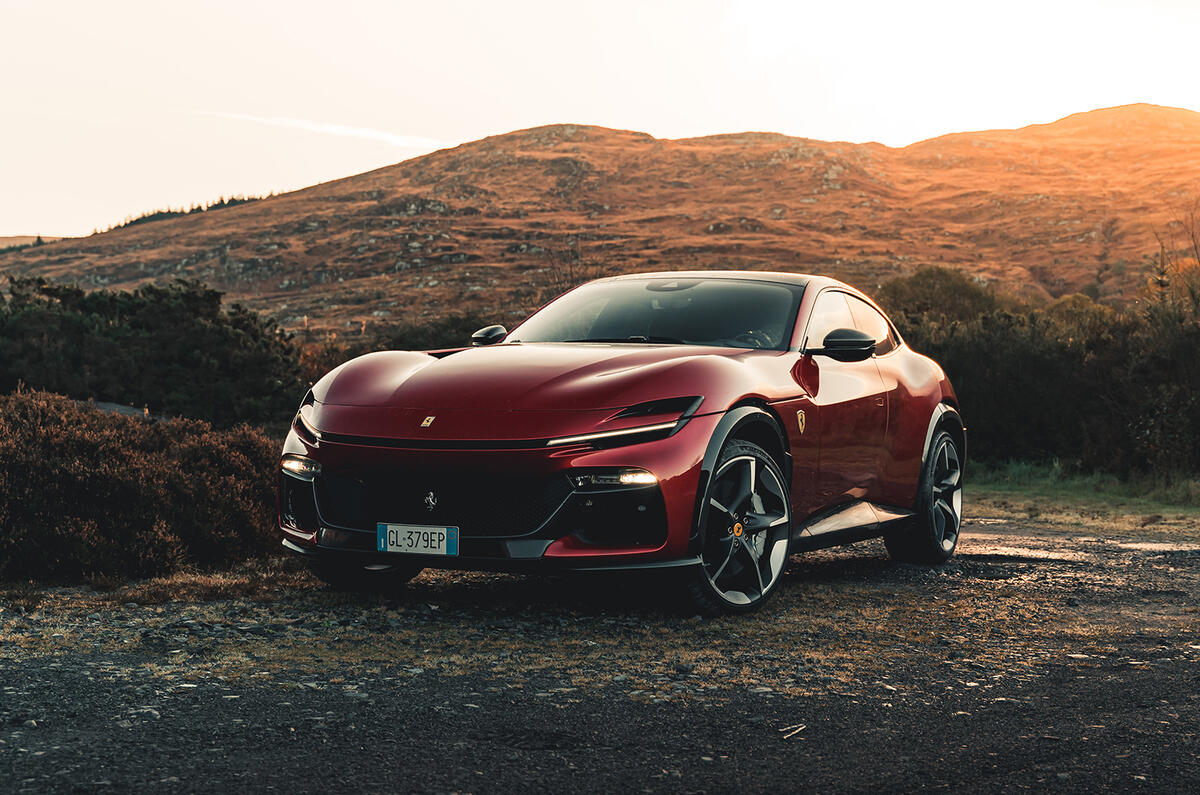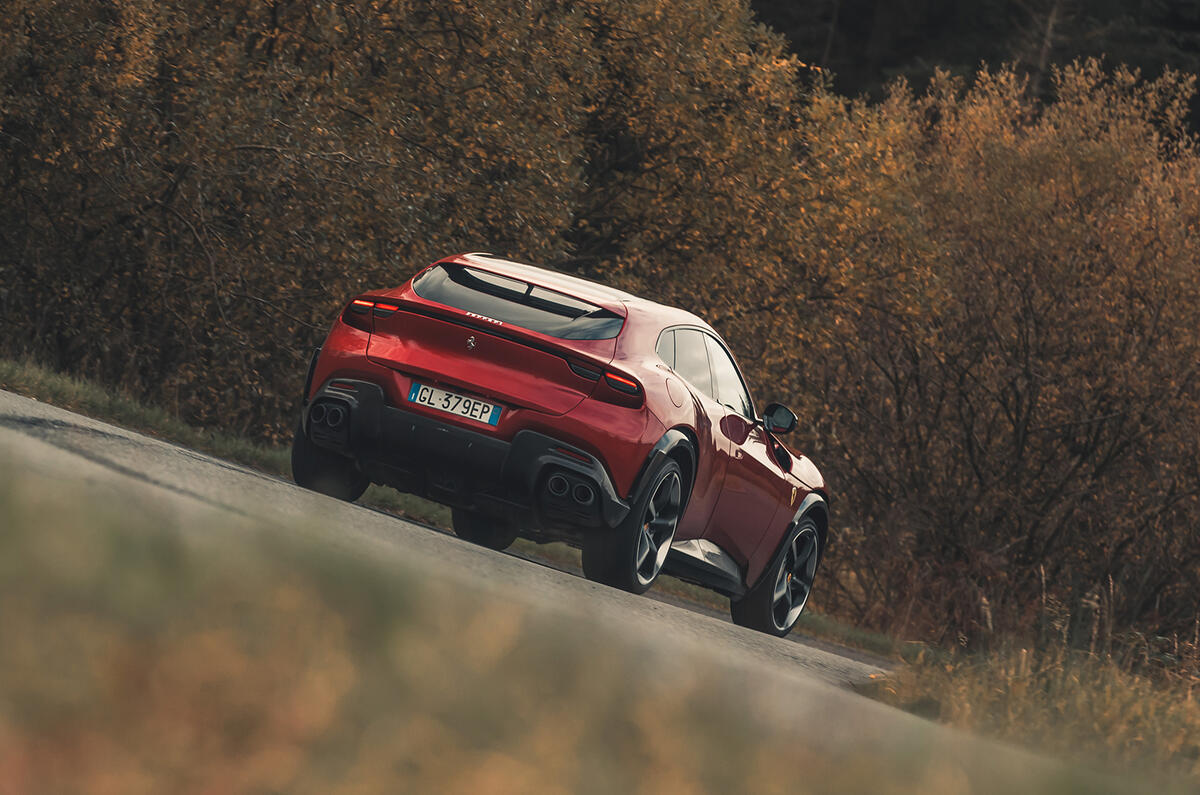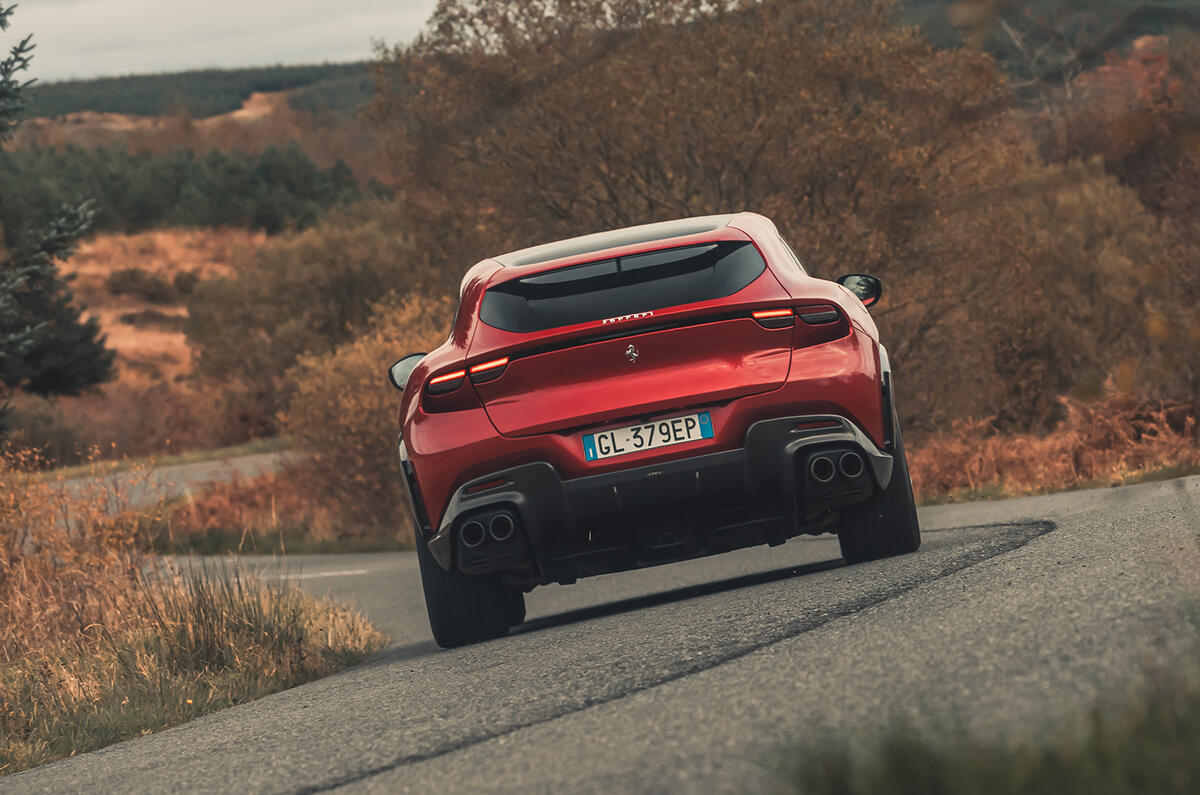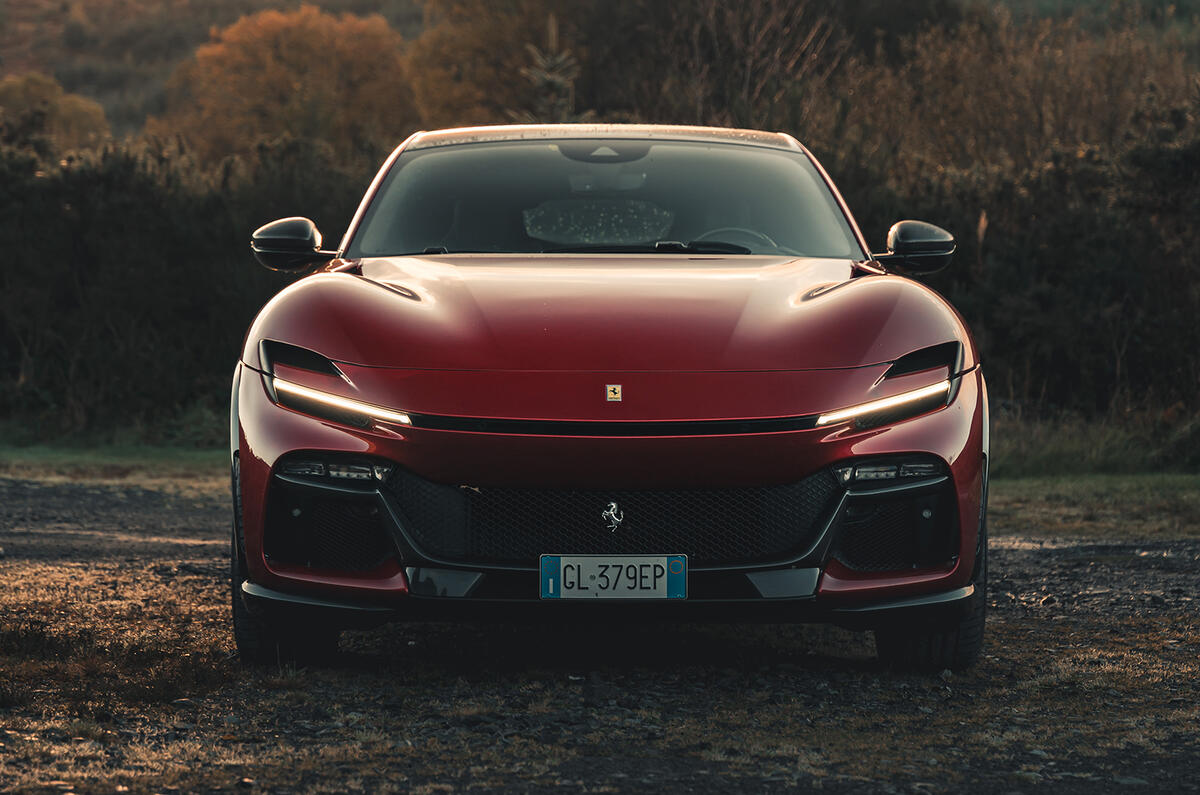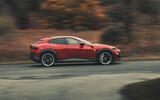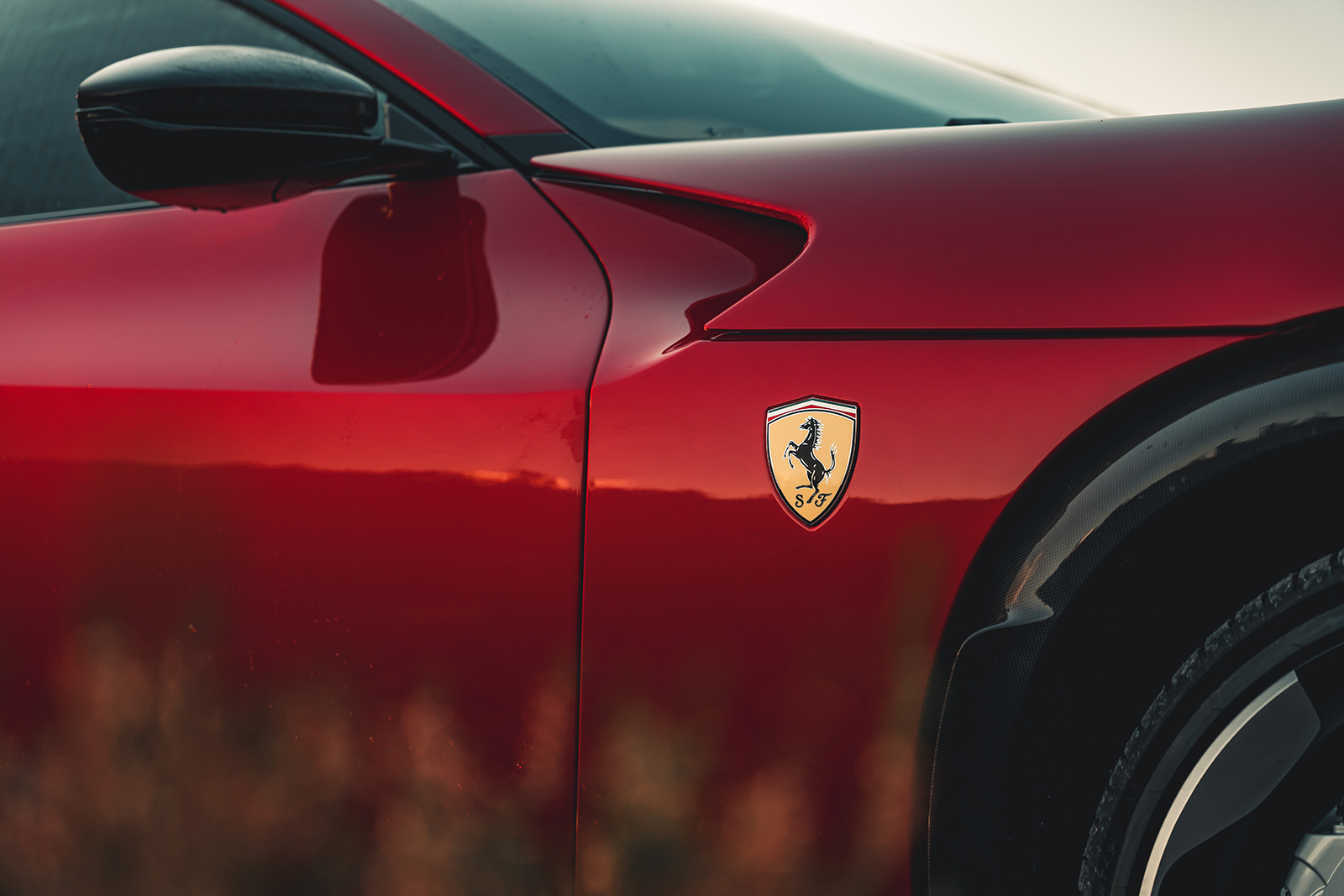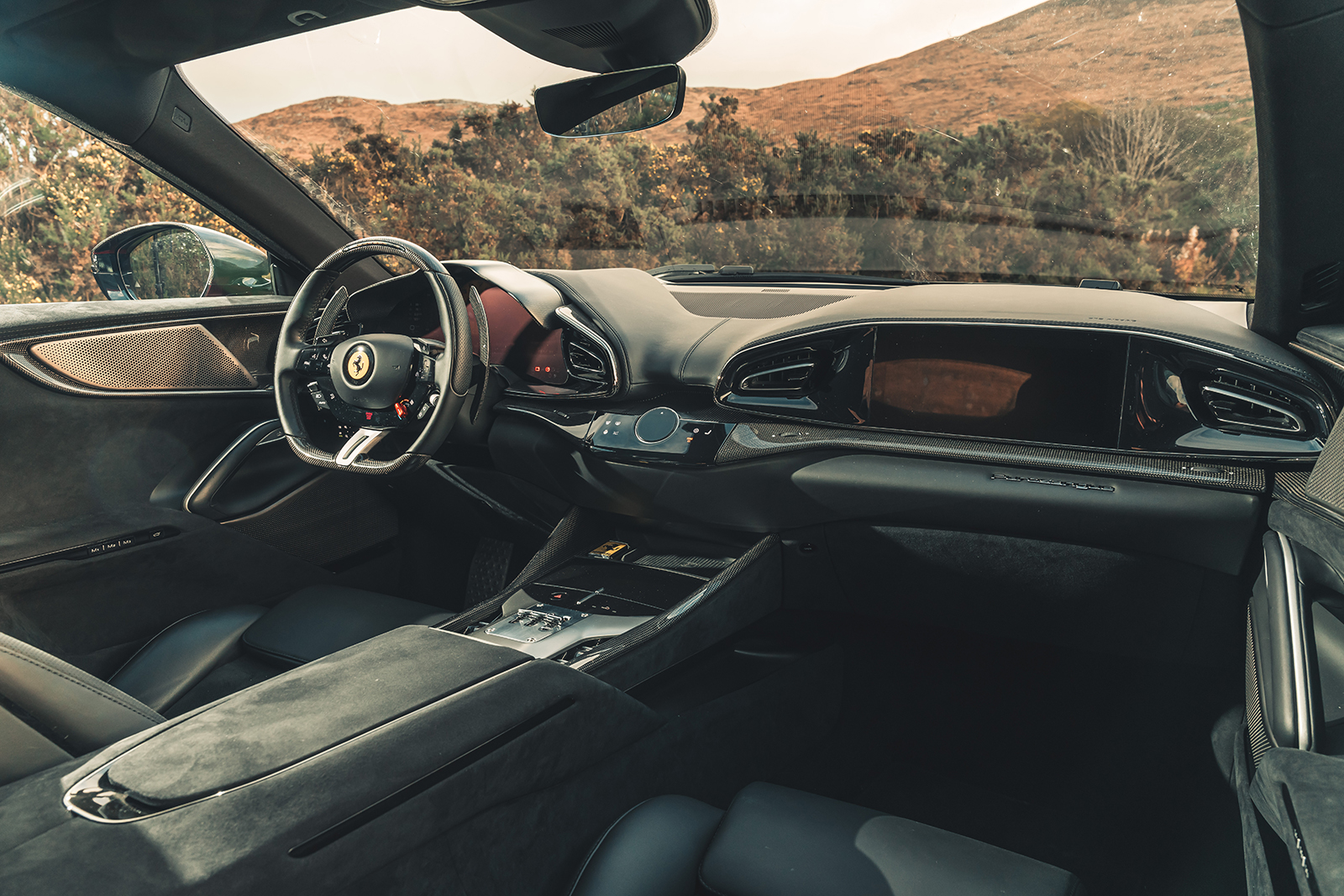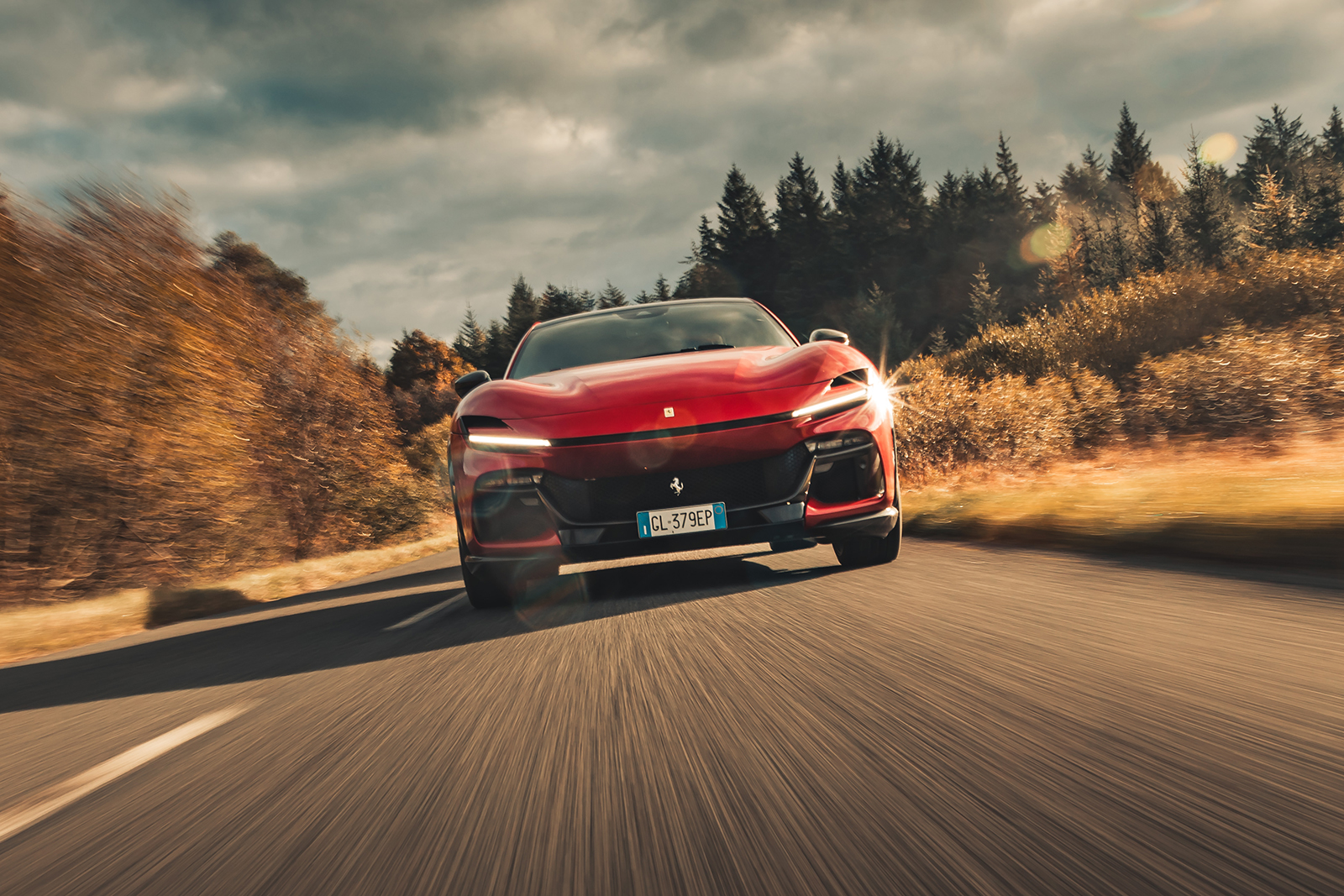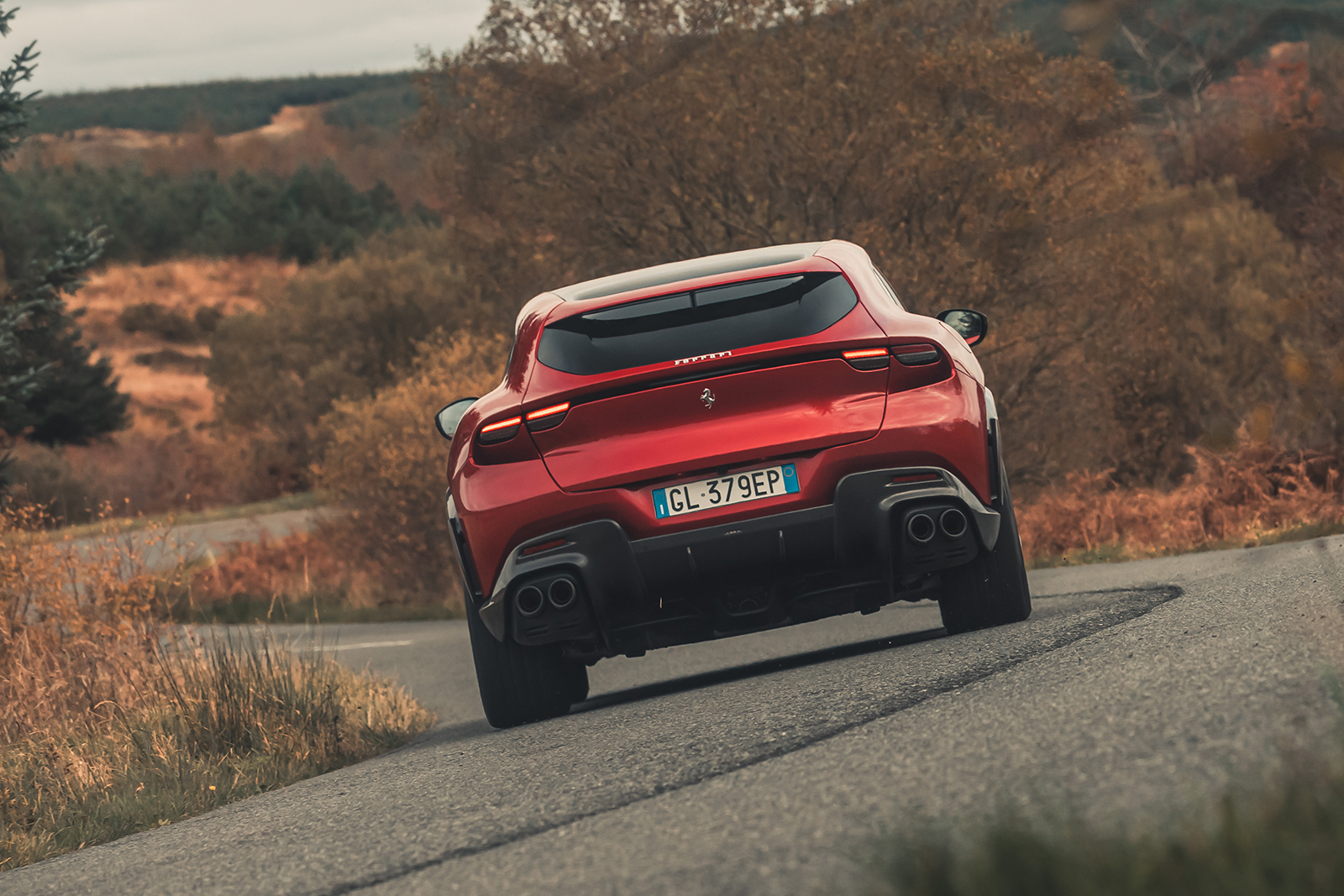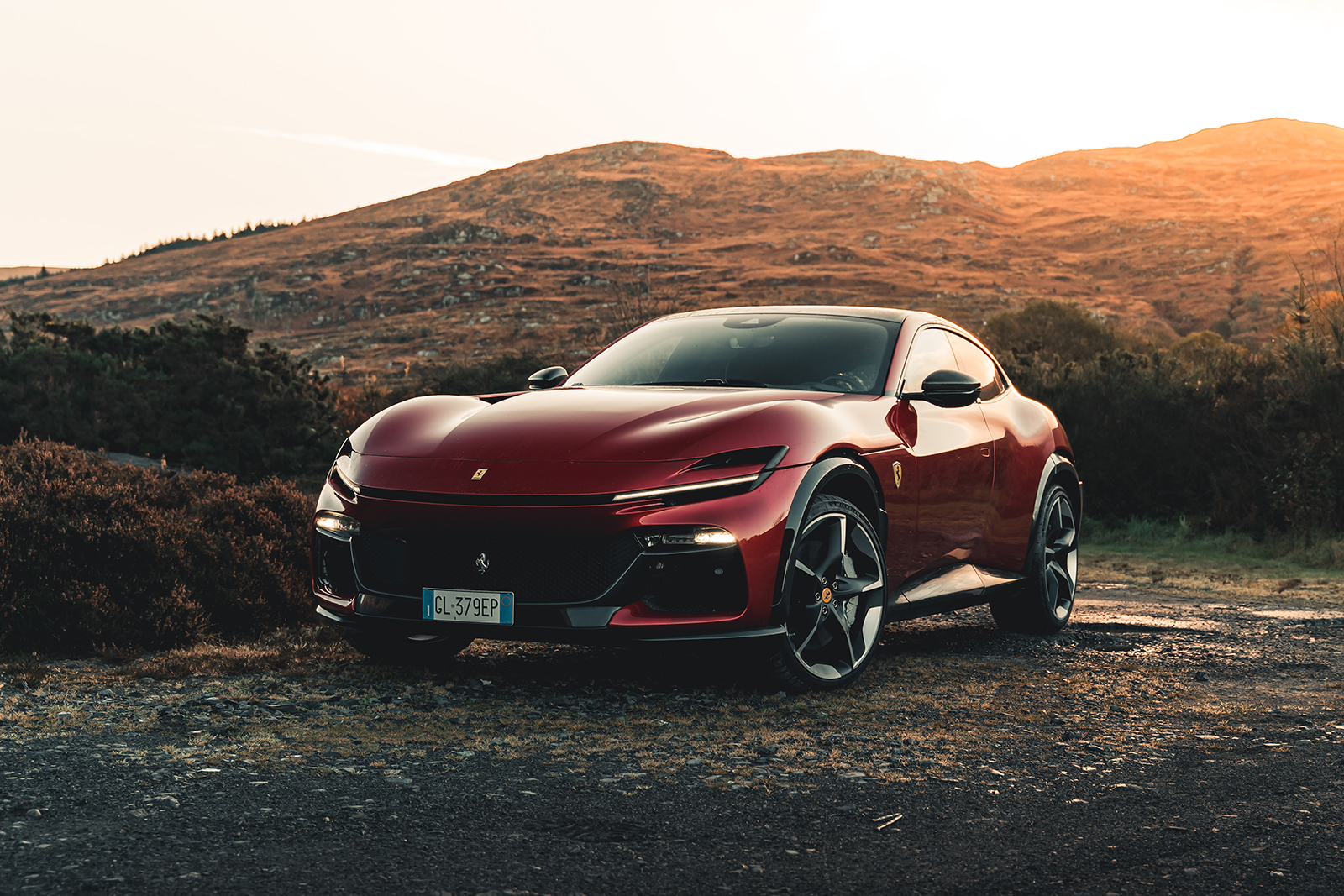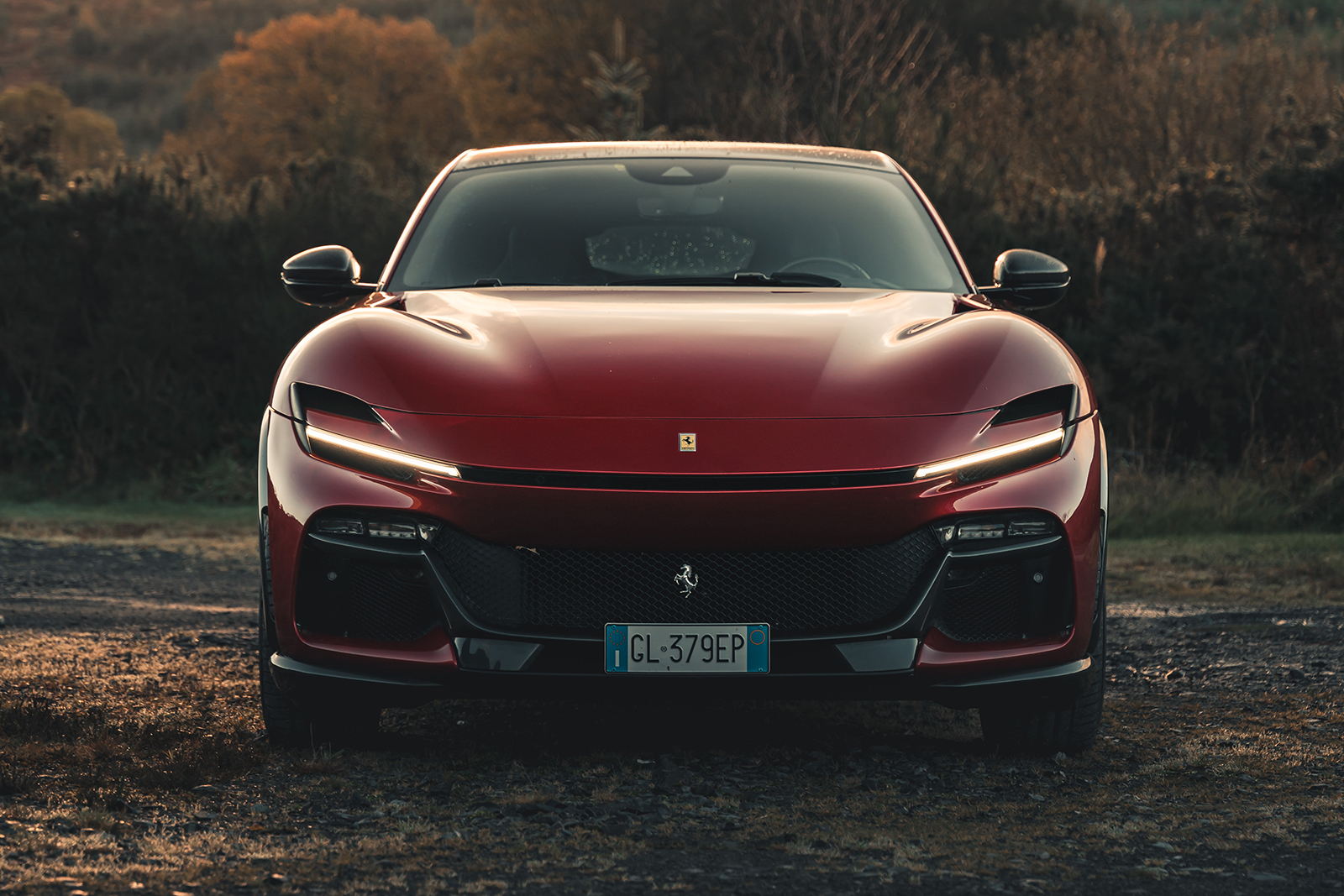With that, though, body control is also tight. If the Purosangue were sufficiently light, the 48V suspension system would put enough force into itself to pitch into corners, rather than just roll less than expected.
How much less than expected? The Purosangue isn’t that tall (at one point I follow a Citroën Berlingo and figure its driver and I are at about the same level), but the Ferrari’s body movements are tied down like I wouldn’t expect from even this modest elevation.
It’s taut, controlled and agile for a car with an engine this size out the front, and with this kerb weight and this ground clearance. And boy, it’s fast. It has a very honest big-coupé vibe.
I try to think of the car it reminds me of most and ultimately settle not on its 4x4 competitors from the Volkswagen Group or Rolls-Royce but an Aston Martin, although not the obvious one either. Instead, I imagine what an Aston Martin Rapide would have been like if it had been jacked up, not to full SUV levels but to those of cars that get Dakar, Allroad, Cross Country or Scout monikers.
The similarities are there: aluminium chassis, front-mounted V12, transaxle, four seats, modest hatchback. The Ferrari bods are right: this isn’t an SUV, it’s a Rapide Allroad.
Ultimately, its handling balance has that presence. There’s enough power here to overwhelm sticky rubber on a warm day (where it would do 0-62mph in 3.3sec and 193mph), so with winter tyres on glassy, frosty or truly snowy gravel tracks, it has a surplus of hoon.
The Purosangue slides and skips and yumps with supreme ease and balance and then settles again with the deftness of a stage-ready rally car. It’s not an off-roader, and it’s not a 4x4, really. It can’t even tow anything. But as a way to have the V12 Ferrari experience in a relaxed setting without having to worry that you will crack four grand’s worth of carbonfibre on a driveway ramp, look no further.
Snow, no snow, it doesn’t matter: this car is a laugh. The DBX 707 is perhaps more flamboyantly keen to shout. The Cayenne Turbo GT is perhaps the only road-pummelling SUV that would equal the Purosangue for seriousness. And I still think this car will never be quite as cool as a GTC4. But this is a car Ferrari had to make, and while you excuse some car makers their SUVs because they let them make enough money to produce the sports cars we love, the Purosangue does for its maker what a lot of SUVs can’t for theirs: it actually feels like a Ferrari.




